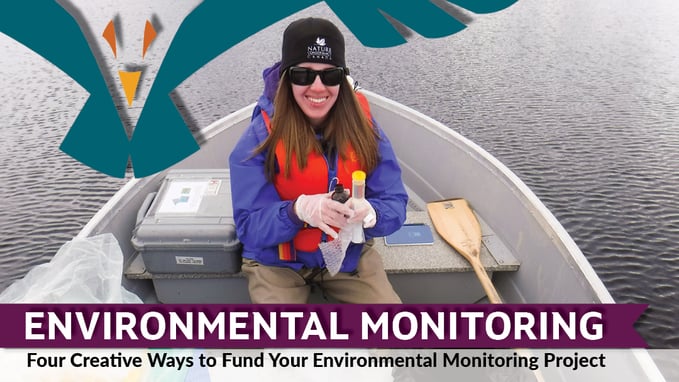
Welcome to the third post in our blog series on environmental monitoring. Our last post addressed the core questions to ask as you plan your project: Five Key Questions to Plan a Community-led Environmental Monitoring Program. One of the most pressing is the question of how to fund your program, which is the focus of this post.
The good news is that more funding is available for Indigenous-led environmental projects than ever before. On top of that, the list of funding sources has become much more diverse.
Programs can be self-funded from own-source revenue, proponent funded, government funded, or funded by the not-for-profit sector. Private foundations and other organizations can also be a source of financial support. Each type is best suited for different programs, eligibility criteria, and desired outcomes.
We have seen Indigenous Nations successfully pull together money from multiple sources to fund their programs. We’ve seen many possible models work effectively and can connect you to funding sources and ideas as well as to other Nations who could share their experiences with you.
As you read through the options described below, open your mind to all of the options and let your creative thinking flow. There’s likely a way to make it happen.
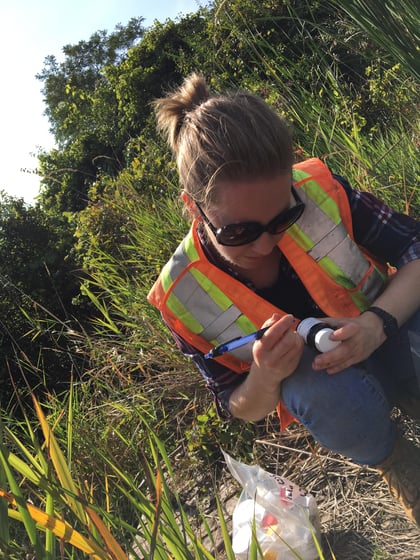
#1: Federal Funding: ECCC Announces Over $94 Million for Monitoring and Related Activities
Although at first glance this may not seem like your most creative option, The Government of Canada is a reliable source of funding for First Nations, Métis, and Inuit organizations with projects focused on environmental monitoring, assessment, and planning. This year, Environment and Climate Change Canada (ECCC) announced over $94 million over five years for initiatives seeking to strengthen Canada’s climate readiness.
Aboriginal Fund for Species at Risk
The Government also made historic investments into Indigenous-specific environmental funding, including additional funding for the Aboriginal Fund for Species at Risk.
But how do you go from a funding opportunity to a meaningful, engaging project with your community? What can these projects actually look like? Let’s look at environmental monitoring in action.
Project Example: Magnetawan First Nation’s Reptile Monitoring Program
With funding from the Aboriginal Fund for Species at Risk in hand, the species-at-risk team at Magnetawan First Nation, a community in the Georgian Bay, set up a comprehensive system to track species movements, behavioural patterns, and encounters with infrastructure such as highways. This data collection supplemented observations submitted by the community regarding species-at-risk encounters on roads in and around the community. The collected data was then integrated into land use design and planning initiatives to incorporate mitigation strategies such as ecopassages.
Check out our blog post for the full story: GIS In Action: The Magnetawan Reptile Monitoring Program.
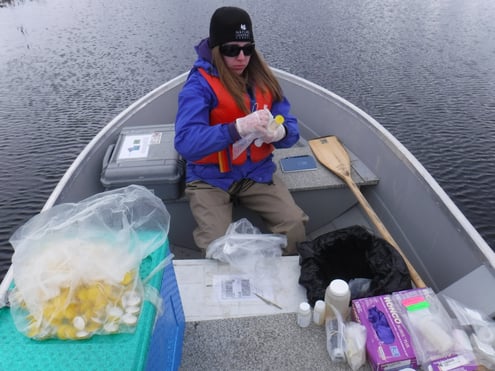
Other notable funding opportunities for 2022-2023:
- First Nations Guardians Initiative
- Nature-Smart Climate Solutions Fund
- Environment and Climate Change Canada’s Eco-Action Community Funding Program
- CER – Indigenous Monitoring
- Science Horizons Youth Internship Program
Opportunities to keep an eye on:
These funding opportunities are not currently open but will be again in the future. Sign up for our biweekly news and funding digest, The Talon for updates as these funding opportunities become available again.
- Indigenous Community-Based Climate Monitoring Program
- Aboriginal Fund for Species at Risk
- Habitat Stewardship Program for Species at Risk
- First Nations Environmental Contaminants Program
- Indigenous Capacity Support Program
#2: Not-for-Profit Funding
More and more non-profit and non-governmental organizations are looking for First Nations, Métis, and Inuit collaborators for their environmental projects. This comes, in part, from a growing recognition of the importance of Traditional Ecological Knowledge in creating sustainable environmental policies and programs.
Indigenous Centre for Cumulative Effects (ICCE)
The ICCE, founded in 2018, is an Indigenous-led not-for-profit association that aims to increase the scientific capacity of Indigenous communities across Canada. For 2021-2023, they have a community funding program for Indigenous organizations and governments who are interested in cumulative effects assessment including environmental monitoring. Through this program, communities can receive up to $175,000 to bring their cumulative effects plans to life! Read more here.
In 2019, the federal government expanded the criteria of the Canadian Environmental Assessment Act to include cumulative effects. This means that the Impact Assessment Agency of Canada is now required to look beyond specific project impacts to identify the regional, historic, and contemporary effects of development on the lands and waters — and the communities that inhabit them.
Get creative on how to frame your project in relation to this topic that is so central to the Indigenous experience. Consider equipping your land users with phone apps that allow them to collect data in real time as they encounter effects on the land. Get creative with GIS and mapping to display the results of your monitoring activities in a way that makes the story of cumulative effects tangible. The options are endless.
Project Example: Blueberry River Cumulative Effects Atlas
Cumulative Effects Assessments are a great way to determine the impacts of development on Aboriginal Treaty Rights. Blueberry River First Nation, for example, created a Cumulative Effects Atlas that demonstrates the impacts of industrial development on the Nation’s ability to exercise Rights. Check it out here.
Nature United
Nature United supports numerous Indigenous-led conservation projects, including Indigenous Guardians programs, and nature-based climate solutions to keep carbon in ecosystems and out of the atmosphere. In 2020, Nature United announced a $100 million grant from the Bezos Earth Fund which was used to advance Indigenous-led conservation work in British Columbia. Since 2010, Nature United has worked to support Indigenous stewardship by providing technical support, networking opportunities and critical resources to Guardian programs. Learn more: Working With Indigenous Peoples (natureunited.ca)
Ducks Unlimited
Ducks Unlimited has partnered with Indigenous communities on projects that range 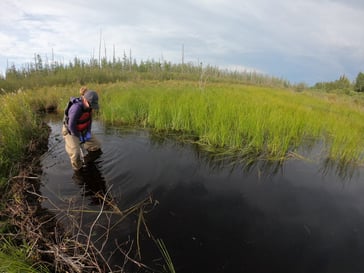
from wetland reclamation and wild rice harvesting areas to extensive mapping endeavours. According to their website: “Our ongoing partnerships with Indigenous Peoples are built on common, shared values: our relationship with the land, and our desire to find long-term conservation solutions that benefit the land, the people and the wildlife that co-exist on it.” Learn more: Working with Indigenous Peoples — Ducks Unlimited Canada
The World Wildlife Fund
The World Wildlife Fund also has some great examples of the power behind not-for-profit partnerships and Indigenous-led environmental monitoring programs. WWF Canada granted over $1,000,000 to Indigenous partner organizations last year to support Indigenous-led conservation initiatives. In their commitment to truth and reconciliation, WWF has this to say: “WWF-Canada will continue to partner with First Nations, Inuit and Métis in their traditional lands and waters, when and where requested, including advocating for more Indigenous Protected and Conserved Areas and Inuit Protected and Managed Areas where Indigenous governments and community organizations have the primary role in protecting and conserving ecosystems.” Learn more: Our commitment to truth and reconciliation - WWF.CA
Project Example:
Recently, the WWF supported the Mushkegowuk Council in their conservation and stewardship of their marine and terrestrial territories. This includes mapping peatland carbon stocks and training community members in carbon monitoring. Read more: How sampling Mushkegowuk peatlands supports Indigenous land stewardship
Notable funding opportunity for 2022-2023:
Clearly, there are many great things happening in this space, so it’s a perfect time to be building cumulative effects into your projects, and to partner with non-profits.
#3: Proponent Funding: It’s 2022, After All
If you want to conduct environmental monitoring in response to a project that is being proposed or is ongoing on your lands, secure funding from the proponent during consultation. They won’t be surprised you asked.
Although there is no formal requirement for proponents to fund this work, it is in their best interest to do so because it helps them gather information they need for regulatory processes, which helps their projects get approved. Community-led environmental monitoring that is funded by the proponent also benefits the First Nation and contributes to a positive relationship between the Nation and the proponent. In 2022, all but the dinosaurs of industry are catching on and won’t be surprised by your ask. Heck, frame it as a requirement of the relationship they want to build with you.
If you do encounter a dinosaur, get them to watch Valerie Courtois’s clip that explains the business case, and the potential return on investment, to funding boots-on-the-ground monitoring:
Under the new Impact Assessment Act, there are now more opportunities for Indigenous participation in follow-up and monitoring for projects than ever before. The Impact Assessment Agency will consult communities about what this participation in monitoring could look like. It may include having community monitors employed. It could include participation on an Environmental Monitoring Committee. These can be two great ways for your community to provide Indigenous Knowledge input to a project over the long term. While there is no specific government funding for these activities, the IAAC recently confirmed that such programs can be considered under the Indigenous Capacity Support Program funding pots.
Project Example: The Manitoba Métis Federation
The MMF have seen the real impact of proponent funding in advancing environmental monitoring processes. According to Marci Riel, Senior Director, Energy, Infrastructure and Resource Management for the Manitoba Métis Federation, “Community monitors can act as the eyes and ears of the nation,” and proponents are one way to help fund these important roles. Check out this post to read more about tips for leveraging proponent funding.
Project Example: Dehcho First Nation Guardians Program for Enbridge Line 21 Replacement
Or look into the “boots-on-the-ground” approach undertaken by Dehcho First Nation in response to Enbridge’s Line 21 oil pipeline replacement project under the Mackenzie River – the possibilities are truly endless!
#4: Private Foundations
Private foundations differ from non-profit organizations and non-governmental organizations because their funds come from a family, individual, or corporation, and they have a minimum amount of money they must pay out annually.
The Weston Family Foundation
The Weston Family Foundation, for example, is privately funded by Loblaw Companies Limited and is committed to funding environmental projects that emphasize research, education, and protection of biodiversity. If any of your environmental monitoring projects fit these criteria, keep an eye out for grant opportunities through their Environmental Stewardship program.
The Metcalf Foundation
The Metcalf Foundation, though its Environment Program, awards grants that fund projects at the intersection of climate change, biodiversity conservation, and sustainable livelihoods. According to their website, “the Dene Tha’ First Nation received a grant from the Metcalf Foundation to help plan and establish an Indigenous Protected and Conserved Area in the Bistcho Lake region of Dene Tha’ territory” between 2021 and 2023. In 2019 and 2020, the Moose Cree First Nation received a grant from the Metcalf Foundation “to help develop and establish an Indigenous Protected Area in the North French River watershed or kâhpânayâw sîpiy in Cree, meaning meandering river, located in the heart of Moose Cree homeland.” Learn more: Grants | Metcalf Foundation
The Environment Funders of Canada
Last but not at all least, the Environment Funders of Canada (formerly Canadian Environmental Grantmakers Network – CEGN) is a national network of philanthropic foundations and other organizations that support efforts to transition toward a more sustainable world. Among other initiatives, they host a Canadian Environmental Grants Database. If you use search this database using the key word “Indigenous” with funding strategy set as "capacity building," this database includes 17 grant makers and 73 grants with a total combined value of $10,000,000. Watch this space for a future deep dive into these options.
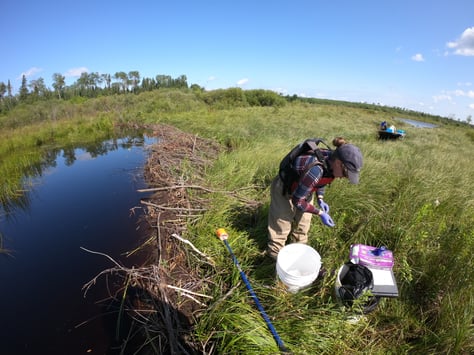
Need Help Finding Funding? Reach Out!
Give us a shout and tell us about your environmental monitoring program. We can work with you on a case-by-case basis to help you identify a funding model that is best suited to your needs and objectives.
Want to keep up to date on funding opportunities? Subscribe to our bi-weekly funding and news digest, the Talon.
Are You Looking for Help With Your Environmental Monitoring or Guardians Program?
Please give us a shout. Our team would love to chat through all your options. Or just chat about environmental everything. We are a self-declared group of science nerds who always have time for everything from bats and turtles to caribou and eels and all the systems that nurture and sustain what matters on our planet!
ENVIRONMENTAL MONITORING AND ADVISORY SERVICES at SVS:
Rights and Interests-based Technical ReviewsScientific Advisory Support
Environmental Monitoring
Guardians Program Development
Source Water Protection
Flood Mapping
Climate Change Adaptation
Nature Based Solutions to Climate Change
No matter what stage of a project you are dealing with, we’ve got you covered. Our services integrate to help you reach your goals.
PROTECTING WHAT MATTERS
Protecting your lands and waters is a crucial part of upholding your rights and supporting community well-being. Our team strives to understand your Nation’s values so we can walk alongside you in protecting what matters most.
Whether you need to conduct baseline studies of your waterways, establish a Guardians program, or are looking for strategic scientific advice on the risks of a proposed development, we are here to help in the ways that will be most effective and meaningful.
Our advice and recommendations rest on deep and wide experience and knowledge across many scientific disciplines:
- Aquatic and terrestrial ecology
- Environmental planning
- Wildlife biology
- Endangered species
- Contaminated sites
- Geological sciences
- Water resources management
- Waste management
- Hydrogeology
- Stream restoration
- Fish biology
- Environmental chemistry and toxicology
- Climate change adaptation planning
- Nature based solutions to climate change
Read Our Full 2021 Services Brochure Here To Find Out What Other Great Services We Offer
Get more posts like this directly to your inbox! Sign up for our bi-weekly funding, news and information digest:
About Us: Shared Value Solutions
We are an Canadian B Corp, and we assist Indigenous communities with support throughout regulatory processes surrounding major development projects like mines, hydroelectric facilities, transmission lines, highway expansions, oil and gas pipelines, natural resource transport applications and nuclear power.
We have deep context and experience behind the recommendations we provide, having worked for our clients on almost every major project in Canada over the last 10 years. For us, it’s all about building long-term relationships with our clients. We want to get to know you and what you want to do so we can help you move your plans forward.
- Impact Benefit Agreement Negotiation Support
- Technical Reviews and Regulatory Process Support
- Community and Economic Development Planning
- Indigenous Knowledge and Land Use Studies
- Environmental Monitoring
- Guardians Program Development
- Climate Change Readiness
- GIS and Mapping
- And so much more: www.sharedvaluesolutions.com

